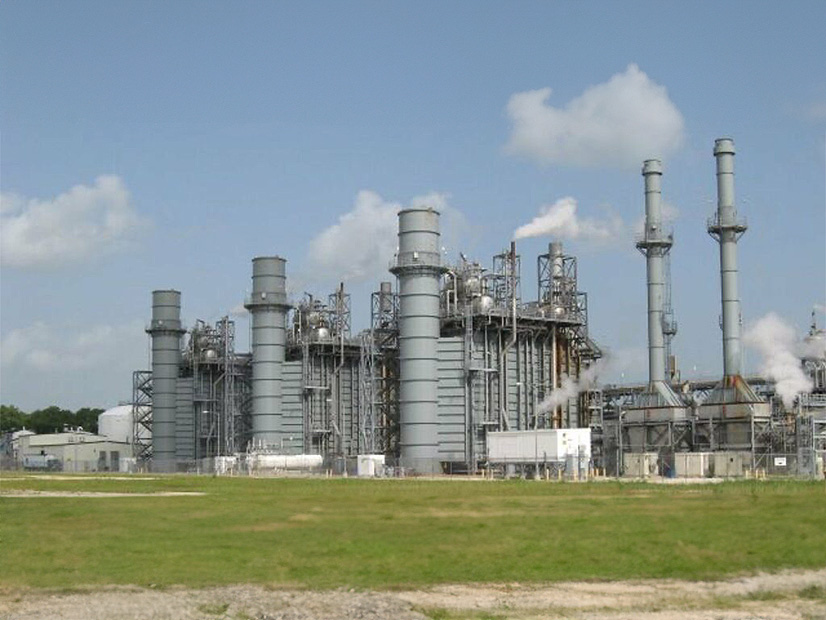ERCOT’s grid survived another hellish summer in 2023, setting a record for peak demand that was 6.6% higher than the mark set the year before, and which itself was 7.1% higher than the previous record, set in 2019.
It didn’t come easy.
The Texas grid operator issued 17 weather watches, voluntary conservation notices or conservation appeals during a summer in which it recorded 193 demand peaks that exceeded the 2022 mark of 80.15 GW. In August, it set its 10th and final record peak of the year at 85.46 GW.
On Sept. 6, ERCOT entered emergency conditions for the first time since the disastrous and deadly February 2021 winter storm. It called a Level 2 EEA when a transmission limit restricting the flow of generation out of South Texas led to a voltage drop. (See ERCOT Voltage Drop Leads to EEA Level 2.)
The event occurred during the evening hours as the sun set, taking solar production with it. ERCOT’s growing reliance on solar power — it produces 12 to 13 GW on sunny days, with a high of 13.9 GW in December — to meet demand has shifted the tightest periods from the afternoon to the evening.
“The whole name of the game right now is how to manage that peak,” CPS Energy CEO Rudy Garza said during a November energy summit. “This was a tough summer, an unprecedented summer, and in spite of the however many events we had where things got tight, we never lost power. You’ve got to give ERCOT some credit.”
The grid operator has been operating under a conservative posture since the 2022 summer. It has been procuring huge quantities of ancillary services to ensure it has enough operating reserves to account for intermittent solar and wind resources.
That has increased costs in the energy-only market. The newest ancillary product, ERCOT contingency reserve service (ECRS), will likely cost between $675 million and $750 million for 2023, despite not being deployed until June. ERCOT’s Independent Market Monitor says ECRS has created artificial supply shortages that produced “massive” inefficient market costs totaling about $12.5 billion last year through Nov. 27.
The Monitor said it has had “encouraging” discussions with ERCOT over changes to its ancillary service methodology. The grid operator has also promised to re-evaluate ECRS and take it back to stakeholders in April or May. (See ERCOT Board of Directors Briefs: Dec. 19, 2023.)
In the meantime, demand for energy continues to increase, fueled by both economic growth and weather. Texas has the eighth-largest economy by GDP in the world ($2.36 trillion), and its lax regulatory environment and cheap labor have attracted much of that business.
That, in turn, has led to a staggering population increase. Texas led all 50 states in job creation over the past 12 months, adding more than 391,000 jobs to a workforce that now numbers a record 15.16 million. The 2.9% growth rate is better than the national average, 1.9%.
After a year that saw the world’s hottest single day on record (July 6); hottest-ever month (July); hottest June, August, September, October and November; and almost assuredly hottest year, scientists expect 2024 to be even warmer. State climatologist John Nielsen-Gammon said Texas experienced some of its warmest months last year, with average temperatures in December about 4 to 5 degrees Fahrenheit above the average temperatures from 1991 to 2020.
Repeating a refrain heard often from the grid operator and state lawmakers since Winter Storm Uri, Dan Woodfin, ERCOT vice president of system operations, said during a resource adequacy conference in September that the answer is more dispatchable generation.
“We need … to cover those timeframes where our tightest timeframe isn’t even in the peak demand time of the day anymore,” Woodfin said. “We’ve got roughly 13 GW of solar online every day. It’s when the sun goes down, and so every day, it becomes an issue of whether the load is going to go down enough, and the wind comes up enough to make up for the solar going down. And it goes down really fast.”
Texas voters in November approved a proposition that creates the Texas Energy Fund, a $7.2 billion low-interest loan program intended to develop up to 10 GW of natural gas plants. ERCOT’s regulatory overseer, the Texas Public Utility Commission, will manage the fund, a result of legislation passed last year. The PUC is staffing up and developing materials and processes before it begins accepting applications in June. (See 2023 Elections Bring Billions for Texas Gas, Dem Wins in Virginia, NJ.)
The pump may have been primed. ERCOT staff told directors in December that generator interconnection requests for about 7.7 GW of gas-fired resources have entered the interconnection queue.
“There’s promise to see that starting to provide an uptick,” said Kristi Hobbs, vice president of system planning and weatherization.
Entering the new year, GI requests received or under study for gas generation stood at 15.5 GW. The vast majority (14.8 GW) were for quick-starting combustion turbine or combined cycle units.
Still, those numbers are dwarfed by energy storage resources and renewables. The ERCOT queue has 127 GW of applications for battery interconnections, 145 GW of solar and 34 GW of wind. Construction costs have dropped for both wind and solar, according to the U.S. Energy Information Administration.
“Those are record numbers, and we are ready to help manage and facilitate those resources coming through the queue quickly,” ERCOT CEO Pablo Vegas said during the December board meeting. “We prioritize thermal dispatchable generation above intermittent resources. That is a directive that we have received, and we are able to process the dispatchable generators first as they come into the queue in order to prioritize their interconnection process.”
ERCOT also considers batteries a dispatchable resource; it expects to add about 25 GW of battery power in 2024 and more than 40 GW in each of the next two years. Energy storage set a high when it produced 2,172 MW of power during the Sept. 6 event.
The PUC will resume a discussion this year that began in late 2023 regarding requirements for batteries participating in ECRS and non-spinning reserve. Commissioner Jimmy Glotfelty says it is “discriminatory” to set a one-hour state of charge for batteries when coal and gas plants aren’t required to maintain real-time state-of-fuel availability. (See Texas Public Utility Commission Briefs: Nov. 30, 2023.)
At the same time, ERCOT is tracking nearly 40 GW of interconnection requests from large loads like bitcoin miners and data centers, both of which have popped up like mushrooms in recent years. These energy-intensive loads, like many industrial users in ERCOT, are compensated when they shut down during tight times. Riot Platforms raised eyebrows in August when it was awarded $31.7 million in energy credits — about $22 million more than the value of the bitcoin it “mined” that month.
Now, consumer advocates are asking why residential consumers can’t receive the same benefit for participating in demand response programs.
“I still believe, and the ERCOT market still believes, that there is a significant amount of demand response that potentially could be quantified and captured over time,” Vegas said in December. “I think that there’s an opportunity for us to work with the market and with the Public Utility Commission on defining those kinds of products that could be utilized throughout the year, not just during an extreme winter season, but to help with peak-shaving capabilities at any point throughout the year. And so that’s something that we’re going to commit to do in 2024.”



